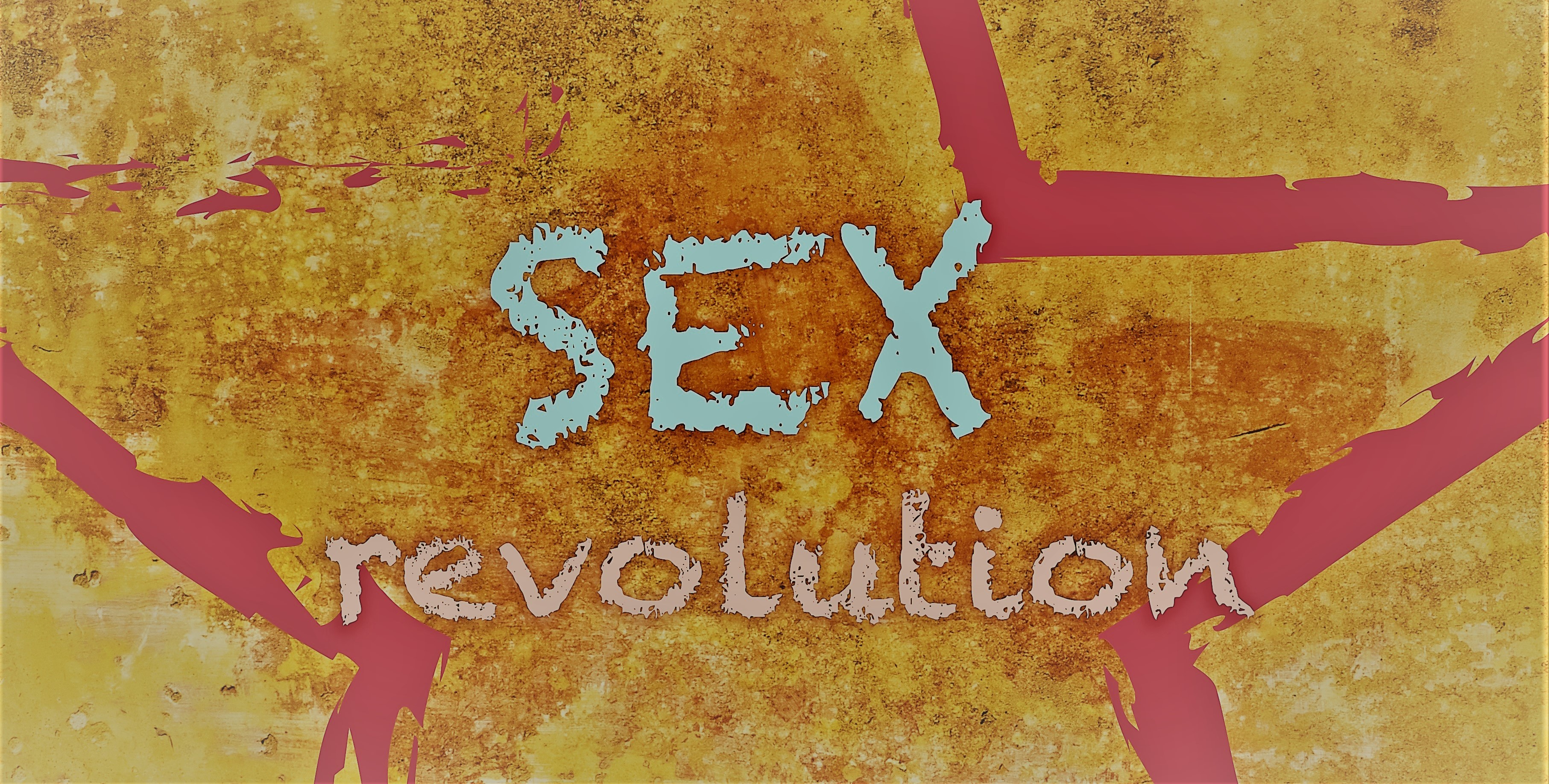


As discussed in the previous article, the Sexual Revolution changed ethical and moral standards in America and much of the rest of the world. This inevitably had a ripple effect through worldview. The first article in this series explains why: worldviews are built on the answers to basic philosophical questions, starting with metaphysics (what is real?), which leads to epistemology (what is true?) and ethics (what is right and wrong?).
Since questions of ethics have their foundation in a particular view of reality, a change in ethics will force a change in metaphysics and in epistemology. As the ramifications of the Sexual Revolution have worked their way through culture, we have seen this process in action.
The Course of the Sexual Revolution
The core idea behind the Sexual Revolution was a modification of Freudian ideas: society’s constraints on sexual behavior are the root cause of unhappiness and mental illness, and so the most direct route to happiness is to eliminate those constraints and allow people to pursue any and every sexual desire they have as long as the activities are consensual. Sexual experimentation was thus encouraged as a way to find happiness and satisfaction.
The original expressions of the Sexual Revolution rejected traditional ideas of monogamy and fidelity in favor of “open marriages, “swinging,” and “free love,” all made possible by the ready availability of contraception and eventually abortion. Although these practices continue in some circles, today the Sexual Revolution’s impact is most often seen in premarital sex. This can take a variety of forms, from hooking up (casual sex), to friends with benefits (sex with friends with no expectation of romantic involvement), to serial monogamy (having “exclusive” sexual relations with one person at a time, but with little to no expectation of the relationship being permanent).
These kinds of sexual activity are possible only because of the ready availability of contraception. Sex is thus divorced from reproduction—its primary biological function—and instead is seen primarily in terms of physical pleasure. Serial monogamy does recognize the emotional bonding that occurs during sexual activity (which particularly in women is reinforced by the release of hormones that promote attachment). This accounts for the (temporary) exclusivity of the relationship. Significantly, however, the people involved do not follow through on the obvious implication that the relationship should be permanent. Cheating is thus considered wrong but finding a new partner after the breakup is normal.
To put it differently, sex used to be reserved (in principle) for marriage, which was expected to be permanent and monogamous and generally to lead to children. Now, premarital sex is the norm even among evangelicals, and sex is largely sterile.
The problem with all of this is that it reflects a defective view of human nature. Sexual activity is not the key to happiness, and rather than liberating us psychologically and emotionally, we now have an epidemic of depression among sexually active women in particular, as well as an explosion in the number of different sexually transmitted diseases. Even without looking at the harm done to society, it is fair to say that the Sexual Revolution failed in its promise.

As the culture was shifting, the battle moved to another institution, the courts. As is often the case with progressive causes, what proved impossible in the legislature was accomplished through judicial decisions, and same-sex marriage became the law of the land. The combination of media, education, and judicial and ultimately legislative action has transformed the culture from top to bottom in terms of its acceptance of LGB issues and its opposition to anyone who dissents.
The LGB Revolution
The Sexual Revolution also helped lay the foundation for the LGB revolution. The unofficial start of the Gay Rights movement was the 1969 Stonewall Riots in New York, though the Kinsey Reports contributed to the climate that helped normalize homosexual activity, and many of the same theorists whose thinking led to the Sexual Revolution also supported homosexual experimentation.
“Gay Liberation,” as it was called at the time, identified itself with a wide range of themes from the radical politics of the Counterculture. The movement was anti-racist, anti-capitalist, and influenced by the second-wave feminist idea that “the personal is political”—that is, that personal matters are tied to larger political and social structures.
In particular, the phrase in both second-wave feminism and in Gay Liberation was meant as an attack on the traditional nuclear family and the entire value structure associated with it. Gay Liberation was thus part of the Cultural Marxist call to develop alternative worldviews to counter the oppressions built into society.
The Long March through the Institutions
Gay Liberation is a textbook example of German activist Rudi Dutschke’s strategy of a “long march through the institutions,” meaning infiltrating the institutions that shape culture so that eventually an alternative worldview moves into the mainstream. (The phrase is usually incorrectly associated with Gramsci, who was one of Dutschke’s inspirations.) New Left leader Herbert Marcuse gave his approval to Dutschke’s strategy, saying it was the only way to change the culture.
The march through the institutions operated on multiple levels. As we have seen, one key culture-shaping institution is the media and entertainment industry. There, the TV show Will and Grace went a long way toward normalizing homosexuality in mainstream culture. A second key institution is education. The schools promoted LGB ideas and lifestyles through a combination of “comprehensive sex education” and anti-bullying campaigns. (While no one should be bullied for any reason, the anti-bullying campaigns defined as bullying any expression of disagreement or disapproval of same sex attraction or behavior, thus once again promoting the normalization of homosexuality.)
As the culture was shifting, the battle moved to another institution, the courts. As is often the case with progressive causes, what proved impossible in the legislature was accomplished through judicial decisions, and same-sex marriage became the law of the land. The combination of media, education, and judicial and ultimately legislative action has transformed the culture from top to bottom in terms of its acceptance of LGB issues and its opposition to anyone who dissents.
A key element in this process was the insistence in the absence of evidence that we are born with our sexual orientation and that it is thus immutable, despite the number of people who have switched from heterosexual to homosexual orientation and vice versa. Legislatures have thus banned conversion therapy, defined as any attempt to change a person’s sexual orientation or gender identity.

Once sex is detached from marriage and from procreation and once out-of-wedlock births are normalized, marriage is reduced to nothing more than a private relationship between two people based on emotional or other form of attachment. And if that is all marriage is, why not have same sex marriage? The next step will be polyamory, which is already being advocated and mainstreamed in the media.
Impact on the Family
One consequence of all of this is the deconstruction of the natural family. This was advocated by Marx, championed by Lenin, and was a fundamental goal of second-wave feminism as well the Gay Movement; it was also a logical consequence of the Sexual Revolution.
Once sex is detached from marriage and from procreation and once out-of-wedlock births are normalized, marriage is reduced to nothing more than a private relationship between two people based on emotional or other form of attachment. And if that is all marriage is, why not have same sex marriage? The next step will be polyamory, which is already being advocated and mainstreamed in the media.
Further, despite all evidence to the contrary, it has become an article of faith that all family structures are equal in both value and outcomes. Thus, even though same sex couples cannot produce children themselves, they have the same rights to children as traditional couples do, whether by adoption, in vitro fertilization with donated sperm, or surrogate mothers with donated eggs.
Children thus become a commodity, a lifestyle option for same sex couples rather than a product of their relationship. And the surrogate mothers may be well paid, but they lose all rights to the child they bore—which greatly increases the chances for attachment disorders, depression, and the like in the child. Egg donors similarly may be paid but are often uninformed of the dangers of the procedures.
These examples show that the ethics of the Sexual Revolution is essentially utilitarian—an action is ethical if it promotes the happiness of a majority of the people. In the real world, though, this inevitably results in the abuse of the powerless in the name of increasing the happiness of the “majority” (i.e. those with money, power, or influence). We will return to this topic later, but first we need to turn to the Transgender movement.














